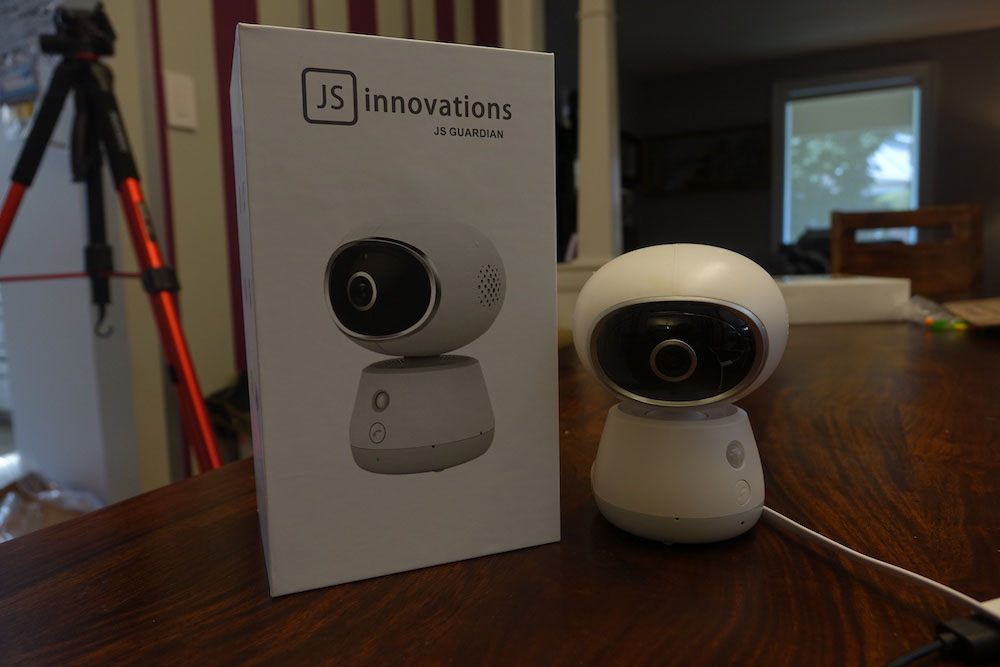
A camera for your baby’s room is one of the most essential devices to have, in my opinion. And one with video provides better reassurances than one with only audio, allowing you to not only hear a baby’s breathing, crying, or cooing, but also see them through a monitor or your smartphone or other mobile device.
The JS Guardian 360-Degree 1080p Wi-Fi Security Camera from JS Innovations uses Wi-Fi technology so that you can view (and control) the camera from your mobile device.
I took one home to use and provide some feedback on how it works.
What is the JS Guardian Wi-Fi Security Camera?
The JS Guardian Wi-Fi Security Camera is a portable camera that you can set atop a desk or other flat surface, or mount on the wall or ceiling (bracket and screws included) to keep an eye on your baby. Theoretically, you could use it as a standard indoor security camera for other areas of the home as well, such as in a toddler’s playroom, pointed at your back door, or to monitor pets while you are away at work during the day.
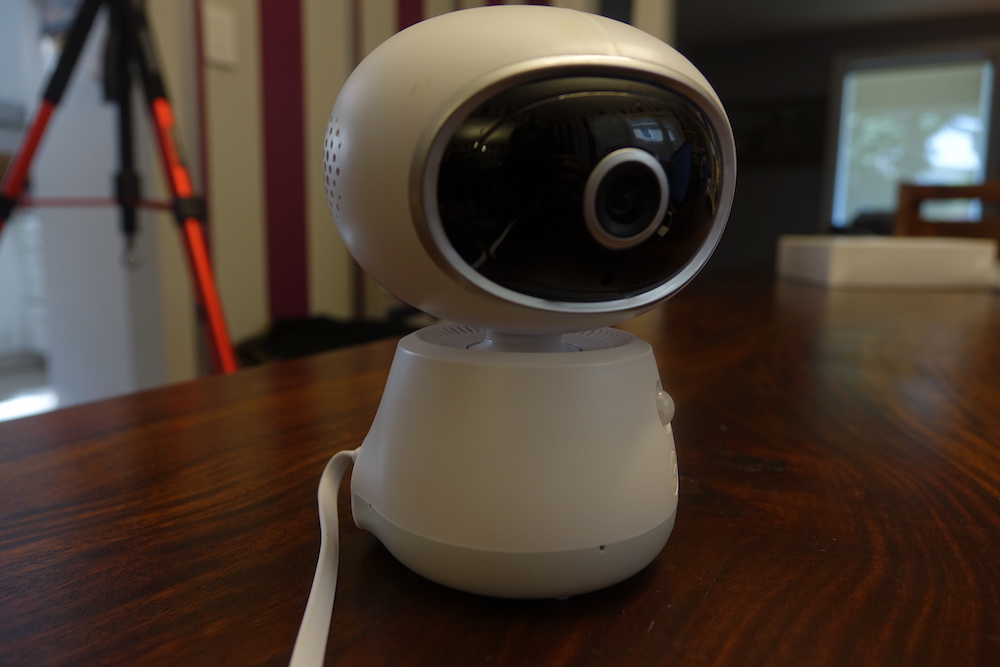
It works using Wi-Fi mobile connect plug and play (or wired connection if you prefer), and shows a full HD 1080p feed of your baby. Use an iOS or Android mobile device and the companion app to see a live view at any time, whether you’re in another room of the home, at the office, or enjoying a night out while your baby stays with a sitter or grandparents.
The camera can pan and tilt up to 355 degrees as you use your phone as a remote control for it to adjust angles through a full 360 degrees, and has a built-in high-sensitivity 38dB microphone and speakers for two-way audio so you can speak to and soothe your baby from afar, or even in the middle of the night without having to get up from bed just so they can hear your voice. A built-in Infrared dual-filter automatically switches to night vision when the light level dims. The motion sensor, meanwhile, can send push notifications to your mobile device so you know when your baby has begun stirring, or is awake from their nap. There’s also a call button so toddlers who are able to do so can summon you whenever they need you.
In addition to live footage, you can also view recorded footage or snap photos using your smartphone; and can share a unique URL with others so they can have access to the feeds as well, like grandma and grandma, or a spouse who’s travelling on business and doesn’t have the app.
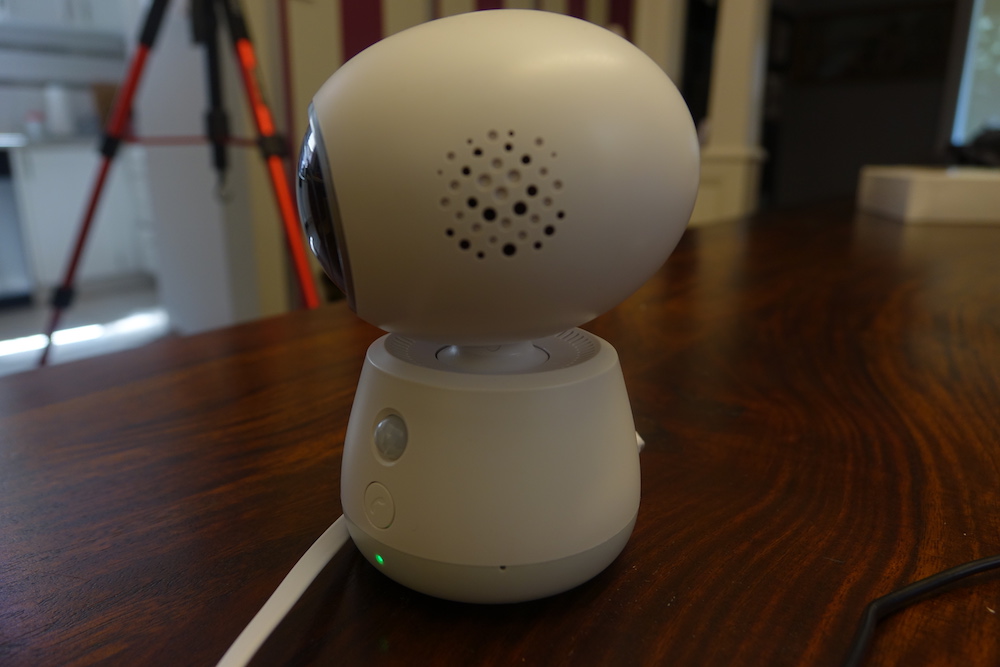 Unboxing and how to set up the JS Guardian Wi-Fi Security Camera
Unboxing and how to set up the JS Guardian Wi-Fi Security Camera
The camera comes in a sleek, white box with minimal packaging, which is appreciated. Open it up, take out the camera and Quick Start guide and pull out the conveniently stored accessories box, which contains the power cord and adapter, wall mount and screws.
The camera, which looks like a little robot with an oval top and square-ish shaped base, has an IR LED and lens on the front, and mic, LED, microUSB port, microSD card slot, and LAN port on the back. A reset button, if needed, is on the bottom along with grooves to position the camera in the mount should you decide to use it, which will likely be the case when mounting the camera overhead for a good view inside of a crib. The speaker is on the side.
Once you’ve plugged in the camera, it’s time to download the app. You can scan the QR code in the Quick Start guide or simply search “IPC360” in the Apple iOS or Google Play Store. It’s a bit weird that the app isn’t listed under JS Innovations or JS Guardian, but as long as you refer to the guide, you will have no trouble finding and downloading it.
Then, go through the set-up process, ensuring that your smartphone or tablet is connected to the same Wi-Fi device that the camera will be connected to. If you don’t already have an account, you will have to sign up by entering your e-mail address then a verification code that is instantly sent to you and create a password. With a device like a baby camera, I was concerned that a simple eight-letter verification code I entered was accepted: I would have liked to have been encouraged to create something more secure.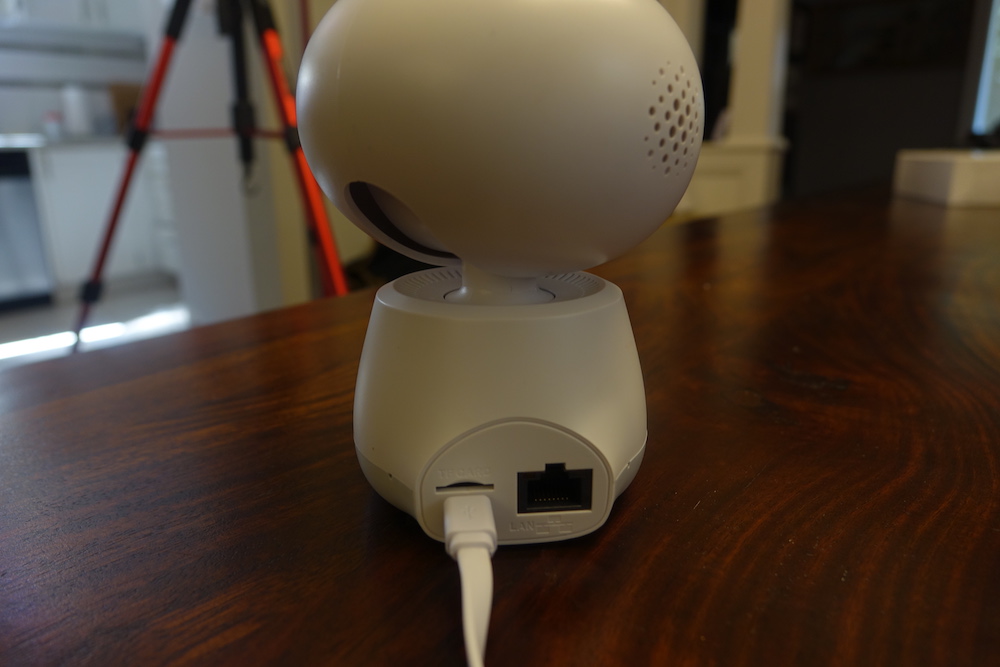
From there, set-up is super-easy. Choose to set up wirelessly or through an Ethernet cable connected to your router (the cable is not included.) I chose Wireless Mode. Plug the camera in and wait about 30 seconds until the red light at the bottom begins to flash slowly. Enter your Wi-Fi password, wait as it makes R2-D2-like sounds as it searches for the network, name the room or choose from a preselected list (I simply called it Patrick’s room as I placed the camera in my 7-year-old son’s bedroom) and you’re off to the races!
You can set up a navigation shot, which will turn the camera around as it takes a compilation of 15 photos and stitches them together for a panoramic image of the entire room or area that displays in the background in the app.
Evaluation of the JS Guardian Wi-Fi Security Camera and App
Any worries I initially had about security were wiped clean with a scrolling message that notes that the video is encrypted to protect privacy. This is a great reassurance given that privacy and security are a top concern among parents using cameras that connect over Wi-Fi.
JS Guardian Wi-Fi Security Camera image quality
View the black and white or colour image in a small 16:9 window within the app or turn your phone (or tablet) horizontally to see it full screen. Then press and swipe your finger back and forth, up and down, to adjust the view up to 355-degrees panning and 65-degrees tilting. Sensitivity can be off, taking a few seconds before your swipe registers and the image moves. This could also be due to your Internet connection or the device you’re using, so each user may have a different experience. For quick access to a specific location in the room, click on it in the navigation shot panorama to instantly go to that spot and focus there. I found that method to be the most effective way of having the camera move to where I wanted it to go. But for generally navigating around a room by slowly panning and tilting, your best bet is to turn your phone horizontally and use the larger screen—the small window was quite small, even on my iPhone XR, which has a 6.1” screen.
Select from HD, SD, or auto picture quality and see how many kilobytes is being used per second for each. In HD, images are super clear and crisp, even though it’s only in black and white. You can even pinch to zoom in if you want to check if your baby’s eyes are open or not or see the reassuring rise and fall of his chest while he sleeps. 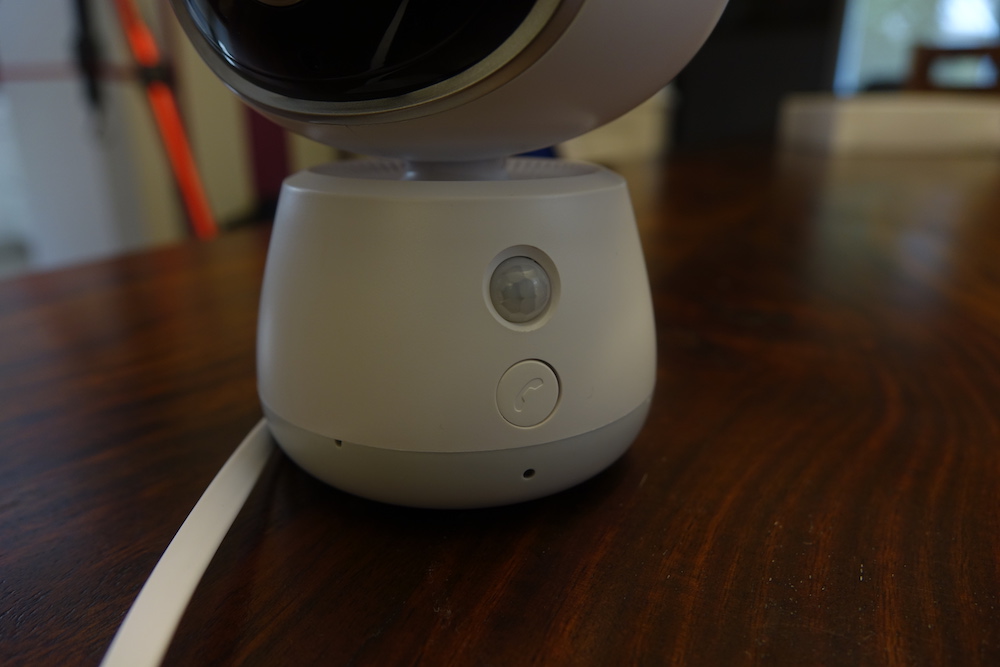 SD mode showed a noticeable decline in resolution—I’d recommend using HD mode at all times, unless there’s a viable reason to reduce (if you have a limited Wi-Fi plan, for example, or lots of devices on the network and need to spare every kilobyte of bandwidth you can .)
SD mode showed a noticeable decline in resolution—I’d recommend using HD mode at all times, unless there’s a viable reason to reduce (if you have a limited Wi-Fi plan, for example, or lots of devices on the network and need to spare every kilobyte of bandwidth you can .)
JS Guardian Wi-Fi Security Camera app
You get 30 days of free cloud storage of seven days of footage at a time, after which you can sign up for a paid plan. Alternatively, you can also insert a microSD card and save footage of motion activated-events to that. This is useful for those who use nannies or babysitters and want to set this up as a “nanny cam,” or if you simply want to look back to see just how your toddler managed to get out of his crib at night. Use the little sliding ruler in the app to flip back to a specific time or click the date and adjust accordingly to where you want to view footage.
JS Guardian Wi-Fi Security Camera alarm and notification
An interesting feature is the reverting call and PIR (passive infrared sensor) alarm which can send a message to your phone any time motion is detected. It does this by measuring infrared (IR) light from objects within its field-of-view (up to about five metres away), like a toddler stirring in his crib, or a pet scurrying along the floor. If you receive the notification, log into the app to see what is going on. A “call” button on the side of the camera can be used by a small child, or anyone in the home, to send an alert to your phone. This is a great way for someone to advise you if they are in distress, especially if they can’t get to a phone. When pressed, my phone beeped and a notification came up that I had an incoming call from Patrick’s room. I clicked check, and up popped the live footage for me to see.
In the app, you can access other functions, too. Press and hold the talk button at the bottom, centre to talk, tap the photo button to capture a picture of the current view (if your baby is looking extra cute, for example), and mute or unmute the speaker. If you have inserted a microSD card, you can also access the playback history, selecting a specific date and time of when you want to see footage. There’s also a button to record a video during the live view. And, as noted, you can tap a small button on the bottom, right to toggle among HD, SD, and auto resolution.
Is the JS Guardian Wi-Fi Security Camera compatible with Amazon Alexa and Google Assistant?
Additionally, you can set up voice access through Amazon Alexa, Google Assistant, or TmallGenie, which would presumably allow you to control the camera by voice. There’s also a skill for the Amazon Echo Show that would allow you to watch video from the camera on the smart speaker’s screen. In any case, search for the “Puwell Cloud” skill to set it up.
Bottom Line
The JS Guardian Wi-Fi Security Camera and app are about as versatile as it comes for video baby monitors, offering you live views, the ability to record footage, receive alerts when motion is detected, capture snapshots, and access the view remotely.
The ability to swipe to pan and tilt the camera is great, but what’s more useful is the panorama shot that lets you instantly turn the camera to a specific area in the room, like by the door or to the inside of the crib.
It’s a great camera set-up that is a great option for new parents who want to keep an eye on their baby, or even a pet, while both at home and away.



